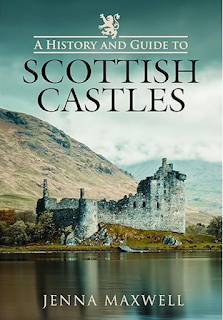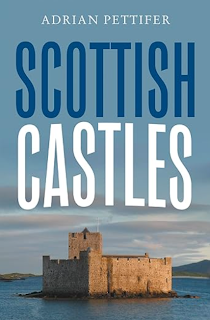Ancient Secrets of Castle Sween!
Greetings, history enthusiasts! Let’s journey to the rugged
shores of Loch Sween in Knapdale, where Castle Sween stands as one of
Scotland’s oldest stone castles. This remarkable fortress has a rich history
and has been home to several notable clans over the centuries.
A Glimpse into History:
Late 11th Century:
Castle Sween, also known as Caisteal Suibhne, was built by Suibhne (Sven) ‘the
Red’, a chieftain of Irish descent and ancestor of the MacSweens. This makes it
one of the earliest stone castles in Scotland.
13th Century: The
MacSweens held the castle until the mid-13th century when it passed to the
Stewart Earls of Menteith.
14th Century: In
the late 1300s, the castle came under the control of the MacDonald Lords of the
Isles1. During their tenure, the MacNeils and later the MacMillans served as
castellans.
1481: James III
of Scotland, wary of the MacDonalds’ power, entrusted the castle to the
Campbell Earls of Argyll.
1647: During the
Wars of the Three Kingdoms, Castle Sween was attacked and burnt by Alasdair
MacColla and his Irish Confederate followers.
1933: The castle
was placed under the care of the Historic Building and Monuments Directorate
(now Historic Environment Scotland).
Architectural Marvel:
Castle Sween features a quadrangular courtyard surrounded by a thick curtain
wall, with later additions including towers and other structures. Its strategic
location on a low, rocky ridge overlooking Loch Sween provided a strong
defensive position and stunning views.
Strategic Location:
Situated on the eastern shore of Loch Sween, the castle’s location was crucial
for controlling the surrounding lands and waterways. Its position made it a
valuable stronghold in Scotland’s medieval power struggles.
Today, Castle Sween stands as a scheduled monument, offering
visitors a fascinating glimpse into Scotland’s medieval past. The ruins provide
a unique insight into the lives of those who once occupied this stronghold and
the historical events that unfolded within its walls.
Have you visited Castle Sween? Share your photos and experiences
in the comments below!
#CastleSween #ScottishHistory #ClanMacSween #ClanCampbell
#HistoricScotland
Feel free to add any personal touches or additional
information to make this post your own!
https://www.historicenvironment.scot/visit-a-place/places/castle-sween/
https://castlesinscotland.blogspot.com/
https://www.google.com/maps/d/edit?mid=1NTTk4vGyDXVvUWaZkYuTE6X1IA9p8A8&usp=sharing
#scotlandtravel #scotlandexplore #scotland
#scotlandbymotorhome #motorhome #motorhomelife #homeiswhereyouparkit #vanlife
#vanlifeuk #searchforsites #park4night #CamperUK #motorhometouringscotland
#nc500 #northcoast500 #se250 #sw300
#ScottishHistory #ClanMaclean #HistoricScotland #CastleSween
#ScottishHistory #ClanMacDougall #ClanCampbell #HistoricScotland









.jpg)









